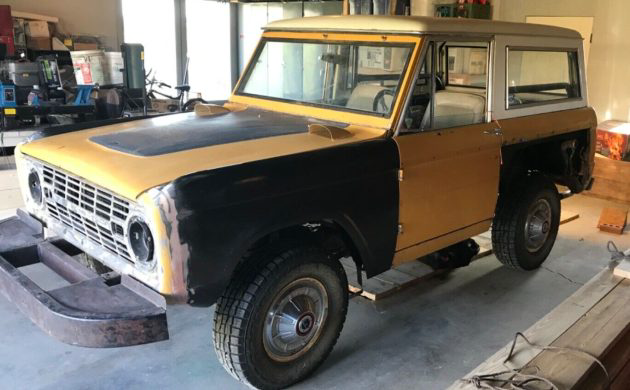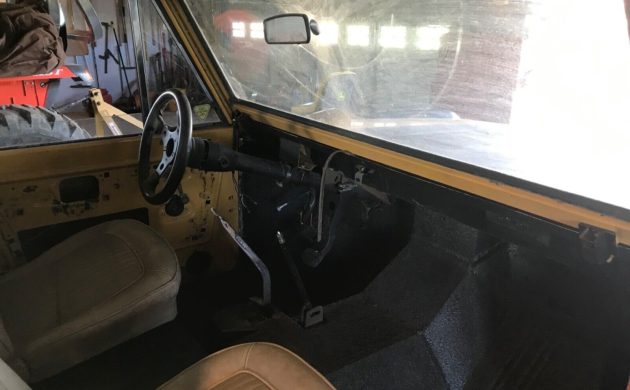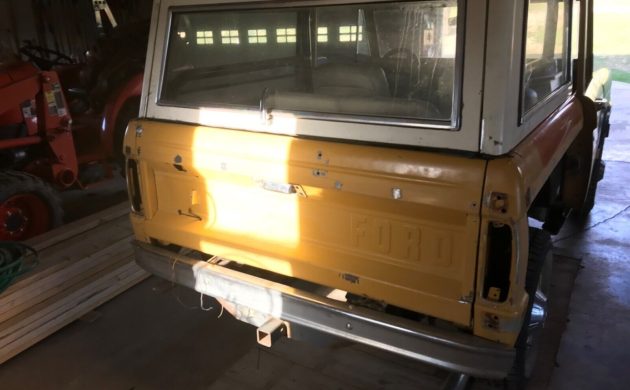
First Generation Ford Broncos seem to fall broadly into two categories when they hit the classic market. Many need significant rust repairs requiring deep dedication and a deeper wallet, while others are rock-solid but priced beyond the reach of mere mortals. That makes this 1971 Bronco a breath of fresh air. It has had rust problems, but most have been addressed. Those remaining are minor, and the parts required to eliminate them are included. Increasing its desirability is the range-topping V8 under the hood. The Bronco is listed here on eBay in Meeker, Colorado. Bidding sits below the reserve at $10,200, although there is a BIN option of $18,000.

It was business as usual for the First Generation Bronco in 1971, with Ford making no significant changes to the vehicle’s styling or engineering. Sales climbed slightly compared to the previous model year but remained in that uncomfortable region below 20,000. However, company management recognized that the Bronco owed them nothing in development costs, electing to continue with production for a further six years. This first owner ordered this Bronco in Chrome Yellow, and it appears to retain a reasonable percentage of its original paint. It is a fairly typical First Generation example that has suffered from some pretty significant rust issues. The seller sourced and replaced the floors, front inner fender wells, and a few smaller components. They cut away the rear quarter panels but include new replacements. The B-pillars also have problems, but shiny new replacements are ready for the buyer to install. The hanging panels are all either new or rust-free, and the glass and trim are present.

Ford enlarged the Bronco’s V8 powerplant from 289 to 302ci in 1969, providing a minor but welcome increase in power and torque. This Bronco’s new owner should have 205hp and 300 ft/lbs of torque at their disposal, with the rest of the drivetrain typical First Generation fare of a three-speed manual transmission and a dual-range Dana 20 transfer case. The seller doesn’t indicate whether the vehicle is mechanically roadworthy but confirms it rolls on new tires. However, the listing suggests that it runs, drives, and is numbers-matching. The engine bay photos are pretty poor, but they indicate that pulling the engine to detail everything to a high standard would be wise for those seeking perfection. With the restoration and repair work already completed, it should be worth the effort.

This Bronco’s interior is complete, although it is largely disassembled. The seats wear Parchment vinyl trim that is free from rips but appears dirty and stained. The door trims have seen better days, and the dash is currently out. A complete retrim would be the obvious choice for a high-end result, with kits readily available. The seller converted the interior with a floor shifter for the three-speed but includes the hardware to reverse the change. I’d probably do that because small details like that could help it command top dollar as a long-term investment.

Addressing rust issues in First Generation Broncos typically isn’t for the faint-hearted. Replacement steel is surprisingly affordable, but the amount of cutting and welding required in many cases can lead owners to place them in the “too-hard” basket. The listing suggests the worst of the problems are history with this 1971 Bronco, and tackling what remains should be straightforward. Would you pursue it further if a Bronco has been on your radar? I wish you luck if you do.







Early ’71 was the first year for the Dana 44 front axle, which was a definite improvement over the Dana 30.
nother “must C in person” as the areas mentioned in the write up are the minor for rust intrusion. Dark spaces in pic and un-shown areas R where the rust is. The “ shinny B pillar” is but a chrome strip that is properly attached w/a push into the blk door weatherstrip/gasket. No real pillar there (even the leading edge of the lift-off top cant B considered a pillar as it is flimsy too). Real death trap as known thru 4 decades ownership. These rigs really need the frame tied crash bar even if relegated to st use only. But Y buy one then? Modify and use as intended (safely) a real dual purpose rig once modified (which lowers the ‘classic car’ price).
People befuddle me. If you look at the original front fenders in one of the pics, there is very minimal rust visible at the bottom rear corners. Why not propery install patch panels to fix that, and preserve the rest of the original fenders?? Wonder if the rest of the replaced panels were no worse than those fenders? If so, what a shame …
And based on the new fenders being bondo’ed to the grill housing, I would not have a whole lot of faith in the quality of ANY of the work on this thing. Looks like they decided to grind that back out on the passenger side, but it’s still mudded together on the driver’s side.